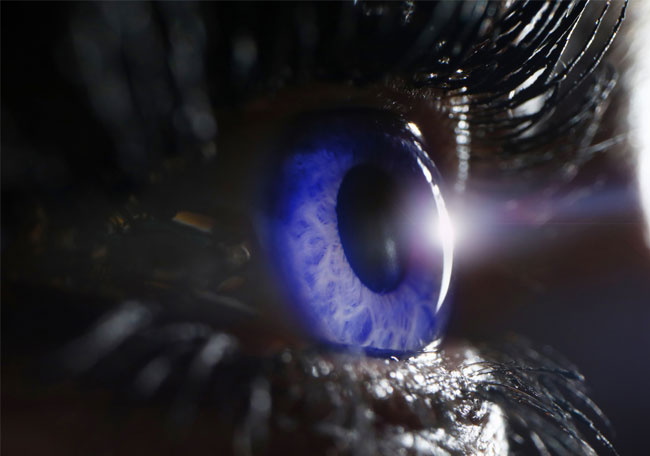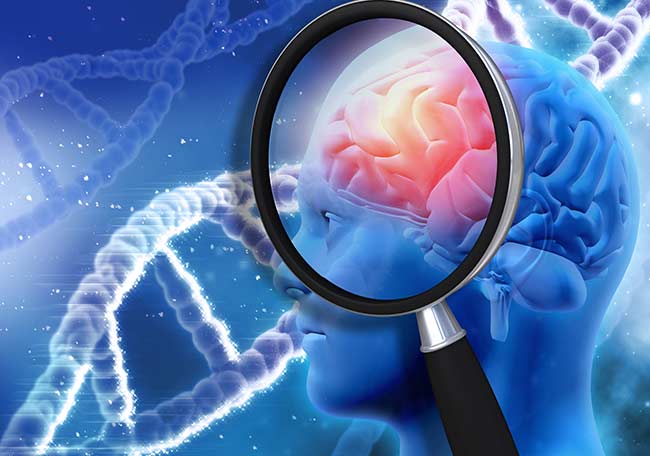Hipertensión intracraneal pediátrica

1. Schexnayder LK, Chapman K. Presentation, investigation and management of idiopathic intracranial hypertension in children. Curr Paediatrics. 2006; 16:336-341.
2. Tibussek D, Distelmaier F, von Kries R, Mayatepek E. Pseudotumor cerebri in childhood and adolescence e results of a Germany-wide ESPED-survey. Klin Padiatr. 2013; 225:81-85.
3. Dessardo NS, Dessardo S, Sasso A, Sarunic AV, Dezulovic MS. Pediatric idiopathic intracranial hypertension: clinical and demographic features. Coll Antropol. 2010;34 Suppl 2:217-221.
4. Gordon K. Pediatric pseudotumor cerebri: descriptive epidemiology. Can J Neurol Sci. 1997;24:219-221.
5. Bursztyn LL, Sharan S, Walsh L, LaRoche GR, Robitaille J, De Becker I. Has rising pediatric obesity increased the incidence of idiopathic intracranial hypertension in children? Can J Ophthalmol. 2014;49:87-91.
6. Quincke H. Uber Meningitis serosa and verwandte Zustande. Dtsch Z Nervenheilkd. 1897;9:149-168.
7. Nonne M. Ueber Falle vom Symptomkomplex “tumor cerebri” mit Ausgang in Heilung. Dtsch Z Nervenheilkd. 1904;27:169-216.
8. Foley J. Benign forms of intracranial hypertension; toxic and otitic hydrocephalus. Brain. 1955;78:1-41.
9. Corbett JJ, Savino PJ, Thompson HS, et al. Visual loss in pseudotumor cerebri. Follow-up of 57 patients from five to 41 years and a profile of 14 patients with permanent severe visual loss. Arch Neurol. 1982;39:461-474.
10. Wall M, Hart Jr WM, Burde RM. Visual field defects in idiopathic intracranial hypertension (pseudotumor cerebri). Am J Ophthalmol. 1983;96:654-669.
11. Friedman DI. The pseudotumor cerebri syndrome. Neurol Clin. 2014;32:363-396.
12. Friedman DI, Liu GT, Digre KB. Revised diagnostic criteria for the pseudotumor cerebri syndrome in adults and children. Neurology. 2013;81:1159-1165.
13. Johnston I, Hawke S, Halmagyi M, Teo C. The pseudotumor syndrome. Disorders of cerebrospinal fluid circulation causing intracranial hypertension without ventriculomegaly. Arch Neurol. 1991; 48:740-747.
14. Aylward SC. Pediatric idiopathic intracranial hypertension: a need for clarification. Pediatr Neurol. 2013;49:303-304.
15. Dandy WE. Intracranial Pressure without Brain Tumor: Diagnosis and Treatment. Ann Surg. 1937;106:492-513.
16. Smith JL. Whence pseudotumor cerebri? J Clin Neuroophthalmol. 1985;5:55-56.
17. Friedman DI, Jacobson DM. Diagnostic criteria for idiopathic intracranial hypertension. Neurology. 2002; 59:1492-1495.
18. Liguori C, Romigi A, Albanese M, et al. Revised diagnostic criteria for the pseudotumor cerebri syndrome in adults and children. Neurology. 2014;82:1752-1753.
19. De Simone R, Ranieri A, Montella S, Friedman DI, Liu GT, Digre KB. Revised diagnostic criteria for the pseudotumor cerebri syndrome in adults and children. Neurology. 2014;82:1011-1012.
20. Wall M, Corbett JJ. Revised diagnostic criteria for the pseudotumor cerebri syndrome in adults and children. Neurology. 2014;83: 198-199.
21. Corbett JJ, Mehta MP. Cerebrospinal fluid pressure in normal obese subjects and patients with pseudotumor cerebri. Neurology. 1983; 33:1386-1388.
22. Bono F, Lupo MR, Serra P, et al. Obesity does not induce abnormal CSF pressure in subjects with normal cerebral MR venography. Neurology. 2002;59:1641-1643.
23. Whiteley W, Al-Shahi R, Warlow CP, Zeidler M, Lueck CJ. CSF opening pressure: reference interval and the effect of body mass index. Neurology. 2006;67:1690-1691.
24. Gilland O. CSF dynamic diagnosis of spinal block. II. The spinal CSF pressure-volume curve. Acta Neurol Scand. 1965;41:487-496.
25. Avery RA, Mistry RD, Shah SS, et al. Patient position during lumbar puncture has no meaningful effect on cerebrospinal fluid opening pressure in children. J Child Neurol. 2010;25:616-619.
26. Ellis 3rd R. Lumbar cerebrospinal fluid opening pressure measured in a flexed lateral decubitus position in children. Pediatrics. 1994; 93:622-623.
27. Lim MJ, Lin JP. The effects of carbon dioxide on measuring cerebral spinal fluid pressure. Childs Nerv Syst. 2009;25:783-784.
28. Tschudy MM, Arcara KM, Johns Hopkins Hospital, Children’s Medical and Surgical Center. The Harriet Lane handbook: a manual for pediatric house officers. 19th ed. Philadelphia, PA: Mosby Elsevier; 2012.
29. Swaiman KF. Swaiman’s pediatric neurology: principles and practice. 5th ed. Edinburgh: Elsevier Saunders; 2012.
30. Rangwala LM, Liu GT. Pediatric idiopathic intracranial hypertension. Surv Ophthalmol. 2007;52:597-617.
31. Avery RA, Shah SS, Licht DJ, et al. Reference range for cerebrospinal fluid opening pressure in children. N Engl J Med. 2010;363: 891-893.
32. Avery RA, Licht DJ, Shah SS, et al. CSF opening pressure in children with optic nerve head edema. Neurology. 2011;76:1658-1661.
33. Lee MW, Vedanarayanan VV. Cerebrospinal fluid opening pressure in children: experience in a controlled setting. Pediatr Neurol. 2011;45:238-240.
34. Newman NJ, Selzer KA, Bell RA. Association of multiple sclerosis and intracranial hypertension. J Neuroophthalmol. 1994;14: 189-192.
35. Williams BJ, Skinner HJ, Maria BL. Increased intracranial pressure in a case of pediatric multiple sclerosis. J Child Neurol. 2008;23: 699-702.
36. Narula S, Liu GT, Avery RA, Banwell B, Waldman AT. Elevated cerebrospinal fluid opening pressure in a pediatric demyelinating disease cohort. Pediatr Neurol. 2015;52:446-449.
37. Tibussek D, Schneider DT, Vandemeulebroecke N, et al. Clinical spectrum of the pseudotumor cerebri complex in children. Childs Nerv Syst. 2010;26:313-321.
38. Babikian P, Corbett J, Bell W. Idiopathic intracranial hypertension in children: the Iowa experience. J Child Neurol. 1994;9:144-149.
39. Distelmaier F, Sengler U, Messing-Juenger M, Assmann B, Mayatepek E, Rosenbaum T. Pseudotumor cerebri as an important differential diagnosis of papilledema in children. Brain Dev. 2006; 28:190-195.
40. Cinciripini GS, Donahue S, Borchert MS. Idiopathic intracranial hypertension in prepubertal pediatric patients: characteristics, treatment, and outcome. Am J Ophthalmol. 1999; 127:178-182.
41. Aylward SC, Waslo CS, Au JN, Tanne E. Manifestations of Pediatric Intracranial Hypertension from the Intracranial Hypertension Registry. Pediatr Neurol. 2016;61:76-82.
42. Balcer LJ, Liu GT, Forman S, et al. Idiopathic intracranial hypertension: relation of age and obesity in children. Neurology. 1999; 52:870-872.
43. Beri S, Chandratre S, Chow G. Familial idiopathic intracranial hypertension with variable phenotype. Eur J Paediatr Neurol. 2011; 15:81-83.
44. Corbett JJ. The first Jacobson Lecture. Familial idiopathic intracranial hypertension. J Neuroophthalmol. 2008;28:337-347.
45. Kharode C, McAbee G, Sherman J, Kaufman M. Familial intracranial hypertension: report of a case and review of the literature. J Child Neurol. 1992;7:196-198.
46. Aylward SC, Aronowitz C, Reem R, Rogers D, Roach ES. Intracranial hypertension without headache in children. J Child Neurol. 2015; 30:703-706.
47. Bassan H, Berkner L, Stolovitch C, Kesler A. Asymptomatic idiopathic intracranial hypertension in children. Acta Neurol Scand. 2008;118:251-255.
48. Aylward SC, Aronowitz C, Roach ES. Intracranial Hypertension Without Papilledema in Children. J Child Neurol. 2016;31:177-183.
49. Faz G, Butler IJ, Koenig MK. Incidence of papilledema and obesity in children diagnosed with idiopathic ‘benign’ intracranial hypertension: case series and review. J Child Neurol. 2010;25:1389-1392.
50. Huna-Baron R, Landau K, Rosenberg M, Warren FA, Kupersmith MJ. Unilateral swollen disc due to increased intracranial pressure. Neurology. 2001;56:1588-1590.
51. Sher NA, Wirtschafter J, Shapiro SK, See C, Shapiro I. Unilateral papilledema in ‘benign’ intracranial hypertension (pseudotumor cerebri). JAMA. 1983;250:2346-2347.
52. Hayreh SS. Pathogenesis of optic disc edema in raised intracranial pressure. Prog Retin Eye Res. 2016;50:108-144.
53. Schirmer CM, Hedges 3rd TR. Mechanisms of visual loss in papilledema. Neurosurg Focus. 2007;23:E5.
54. Friedman DI. Papilledema and idiopathic intracranial hypertension. Continuum (Minneap Minn). 2014;20:857-876.
55. Grant DN. Benign intracranial hypertension. A review of 79 cases in infancy and childhood. Arch Dis Child. 1971;46:651-655.
56. Kesler A, Fattal-Valevski A. Idiopathic intracranial hypertension in the pediatric population. J Child Neurol. 2002;17:745-748.
57. Meador KJ, Swift TR. Tinnitus from intracranial hypertension. Neurology. 1984;34:1258-1261.
58. Brainard L, Chen DA, Aziz KM, Hillman TA. Association of benign intracranial hypertension and spontaneous encephalocele with cerebrospinal fluid leak. Otol Neurotol. 2012;33:1621-1624.
59. Rosenfeld E, Dotan G, Kimchi TJ, Kesler A. Spontaneous cerebrospinal fluid otorrhea and rhinorrhea in idiopathic intracranial hypertension patients. J Neuroophthalmol. 2013;33:113-116.
60. Kunte H, Schmidt F, Kronenberg G, et al. Olfactory dysfunction in patients with idiopathic intracranial hypertension. Neurology. 2013;81:379-382.
61. Bershad EM, Urfy MZ, Calvillo E, et al. Marked olfactory impairment in idiopathic intracranial hypertension. J Neurol Neurosurg Psychiatry. 2014;85:959-964.
62. Yri HM, Fagerlund B, Forchhammer HB, Jensen RH. Cognitive function in idiopathic intracranial hypertension: a prospective case-control study. BMJ Open. 2014;4:e004376.
63. Zur D, Naftaliev E, Kesler A. Evidence of multidomain mild cognitive impairment in idiopathic intracranial hypertension. J Neuroophthalmol. 2015;35:26-30.
64. Roach ES, Golomb MR, Adams R, et al. Management of stroke in infants and children: a scientific statement from a Special Writing Group of the American Heart Association Stroke Council and the Council on Cardiovascular Disease in the Young. Stroke. 2008;39: 2644-2691.
65. deVeber G, Andrew M, Adams C, et al. Cerebral sinovenous thrombosis in children. N Engl J Med. 2001;345:417-423.
66. Isaacman DJ. Otitic hydrocephalus: an uncommon complication of a common condition. Ann Emerg Med. 1989;18:684-687.
67. Roach ES, Sinal SH. Increased intracranial pressure following treatment of cystic fibrosis. Pediatrics. 1980;66:622-623.
68. Roach ES, Sinal SH. Initial treatment of cystic fibrosis. Frequency of transient bulging fontanel. Clin Pediatr. 1989;28:371-373.
69. Vaphiades MS, Eggenberger ER, Miller NR, Frohman L, Krisht A. Resolution of papilledema after neurosurgical decompression for primary Chiari I malformation. Am J Ophthalmol. 2002;133: 673-678.
70. Laviv Y, Michowitz S. Acute intracranial hypertension and shunt dependency following treatment of intracranial arachnoid cyst in a child: a case report and review of the literature. Acta Neurochir (Wien). 2010;152:1419-1423. discussion 1422-1413.
71. Winn BJ, Liao YJ, Horton JC. Intracranial pressure returns to normal about a month after stopping tetracycline antibiotics. Arch Ophthalmol. 2007;125:1137-1138.
72. Walters BN, Gubbay SS. Tetracycline and benign intracranial hypertension: report of five cases. Br Med J (Clin Res Ed). 1981;282: 19-20
73. Dhiravibulya K, Ouvrier R, Johnston I, Procopis P, Antony J. Benign intracranial hypertension in childhood: a review of 23 patients. J Paediatr Child Health. 1991;27:304-307.
74. Kesler A, Goldhammer Y, Hadayer A, Pianka P. The outcome of pseudotumor cerebri induced by tetracycline therapy. Acta Neurol Scand. 2004;110:408-411.
75. Chiu AM, Chuenkongkaew WL, Cornblath WT, et al. Minocycline treatment and pseudotumor cerebri syndrome. Am J Ophthalmol. 1998;126:116-121.
76. Friedman DI, Gordon LK, Egan RA, et al. Doxycycline and intracranial hypertension. Neurology. 2004;62:2297-2299.
77. Roux X, Sallansonnet-Froment M, De Greslan T, et al. [Idiopathic intracranial hypertension as a side effect of doxycycline]. Rev Med Interne. 2009;30:1058-1060.
78. Weese-Mayer DE, Yang RJ, Mayer JR, Zaparackas Z. Minocycline and Pseudotumor cerebri: The well-known but well-kept secret. Pediatrics. 2001;108:519-520.
79. Giuseffi V, Wall M, Siegel PZ, Rojas PB. Symptoms and disease associations in idiopathic intracranial hypertension (pseudotumor cerebri): a case-control study. Neurology. 1991;41:239-244.
80. Ireland B, Corbett JJ, Wallace RB. The search for causes of idiopathic intracranial hypertension. A preliminary case-control study. Arch Neurol. 1990;47:315-320.
81. Warner JE, Bernstein PS, Yemelyanov A, Alder SC, Farnsworth ST, Digre KB. Vitamin A in the cerebrospinal fluid of patients with and without idiopathic intracranial hypertension. Ann Neurol. 2002;52: 647-650.
82. Warner JE, Larson AJ, Bhosale P, et al. Retinol-binding protein and retinol analysis in cerebrospinal fluid and serum of patients with
Comentarios
Para ver los comentarios de sus colegas o para expresar su opinión debe ingresar con su cuenta de IntraMed.











